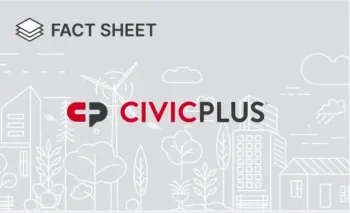The Basics of Ordinance Drafting
Follow these basics to help you draft an ordinance from start to finish
Drafting local government ordinances can sometimes be a challenge. It’s important for the ordinance to be clear, concise, and tailored to your community’s unique needs. Many times, new city ordinances come to life from your local government council meetings that require a change to be made to your community’s codebook. From there, you draft an ordinance and gain approval from your council to amend the municipal code as needed. But what does that drafting process look like?
We’ve compiled our list of basics to help you craft a draft ordinance from start to finish.
Do Your Research
- Determine the purpose of the ordinance and how it should be applied.
- Research other local governments’ codes to see if they’ve adopted similar legislation.
- Consult with your attorney to determine specific constitutional and/or state laws that supersede or amend the language of your ordinance.
Understand the Parts of an Ordinance
- Ordinance number: A unique reference number helps distinguish ordinances from one another and simplifies the process of accessing individual ordinances. These numbers typically include the calendar year the ordinance was introduced.
- Title: A short but detailed description helps readers quickly identify your ordinance and better understand what it’s about. Even when they aren’t required, it’s typically considered a best practice to include titles.
- Whereas clauses: Placed immediately after the ordinance title, these clauses provide additional background information on the ordinance and its purpose.
- Ordaining clauses: Here’s where your ordinance becomes the law.
- Definitions: Do you use uncommon words in your ordinance? Do familiar words appear with ordinance-specific meanings? In these cases, you may want to include an alphabetical list of key terms with clear definitions to help avoid any confusion. Check your Code’s general provisions chapter to see if terms are already defined there.
- Section numbers and titles: For easy identification, break down the body of your ordinance into short sections and label each section with a number and a short, descriptive title. Label subsections or important paragraphs with a number or a letter alone. Avoid overly long sections.
- Articles: The organized sections or chapters of your ordinance that break the document into distinct topics and include the substantive text.
- Substantive text: The long middle section of your document includes the important details of your ordinance.
- Repealer section: This section explicitly repeals any existing provisions that are in conflict with the new ordinance. Be sure to include actual Code citations of language that is being replaced by the ordinance so that you don’t end up with dueling provisions. That could lead to confusion or litigation.
- Severability clause: This crucial clause comes into play if any provisions of your ordinance are found to be unenforceable or unconstitutional. The language ensures that the other provisions remain in effect.
- Effective date: The day your new ordinance goes into effect.
Write Your Ordinance
- Check your code to see how up to date it is. Have there been any amendments since your code was last updated? If your ordinance is amending the current code language, you want to be sure you’re using the most up-to-date version.
- Create an outline as a checklist for your ordinance.
- Remember to arrange sections from the general to the specific; from the all-inclusive to the exclusive. Have an organizing principle behind what you do—temporal, procedural, spatial, numerical, or alphabetical. Choose which organization principle fits the material. For example, a business license article might be organized primarily along the procedural lines for obtaining the license—prerequisites for the license holder and the business, exceptions, license issuance, renewal, then revocation.
- Follow your community’s codebook style that was established during the original codification. The code has a consistent style throughout in order to turn it into a cohesive volume of law that is easy for the public to use. Familiarize yourself with the style of your code. Don’t know your code’s style? Ask our codification experts—they’ll be happy to help.
- Check for grammar and consistent punctuation.
- Note: The preferred punctuation for every entry in a list is a period—not a comma or a semicolon.
- Once you have a draft created, get feedback from your government’s municipal attorney as early as possible.
- Take the final ordinance to your city council for necessary revisions and approval.
Tips on Drafting Your Ordinance
- When writing your ordinance, use clear directions. Showing deleted language as struck through and added language as underlined is very easy to follow; using ALL CAPS is not recommended. Another way to indicate that amendments are being made is to use language such as “amended to read as follows.” When you state, “amended to read as follows,” or “repealed and reenacted to read as follows,” it’s important to include the entire section of the code to be amended by the ordinance.
- Whenever possible, amend specific sections of your code. Use the index and the code comparative table to locate existing material regarding your subject. Recite the language of the section as you want it to appear in the code. If you say, “Amended to read as follows,” be sure to include everything you want the section to say; do not assume that an outside party will know that you intended to keep paragraph (c) if you amend (a) and (b) without repeating the language of (c).
- Use the present tense and third-party singular.
- When using definitions, arrange the terms alphabetically but do not number them (if you assign subsection numbers or paragraph letters to individual items, then your internal references to those subsections may become inaccurate when those items are renumbered/relettered).
- Avoid making specific references to sections; when possible, reference only the first section of a chapter. For instance, “sign regulations are covered under Section 2.04.010 et seq.” instead of, “See paragraph (a)(1) of section 2.04.010 for regulations concerning wall signs in residential districts.”
- Number or caption all illustrations.
- Do not give instructions to globally add or replace terms unless you are absolutely sure how they will be worded; that’s how local governments end up with “barking dogs and cats.”
Want to Make Managing Ordinances Simpler?
Deliver your community’s legislation with confidence with the industry’s oldest, most trusted codifier. Simplify the complex process of drafting, publishing, and maintaining municipal codes with our Codification services, and easily amend your code with our experienced team of supplementation experts. For information on CivicPlus® Municode Codification, contact us to speak with a legal services expert.


